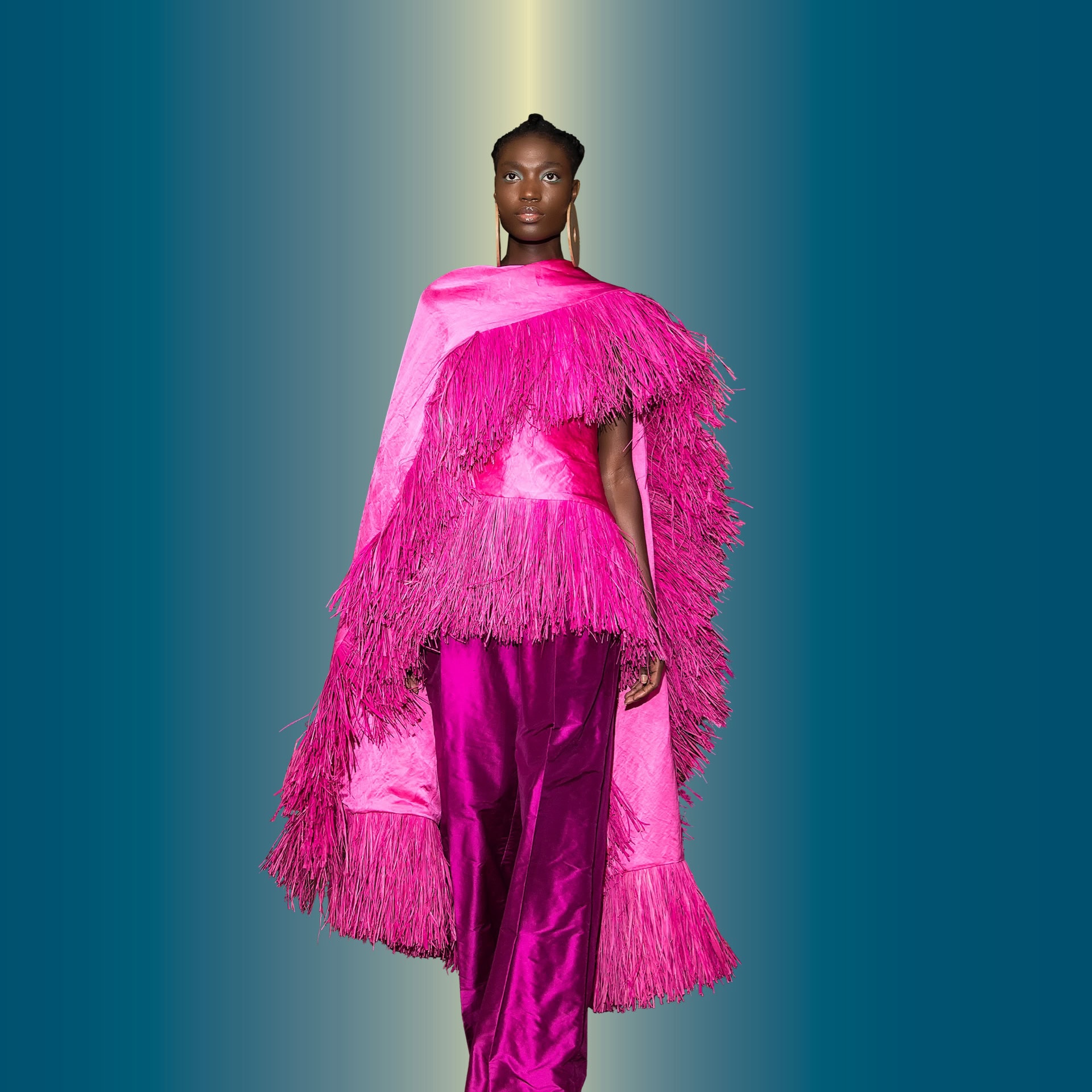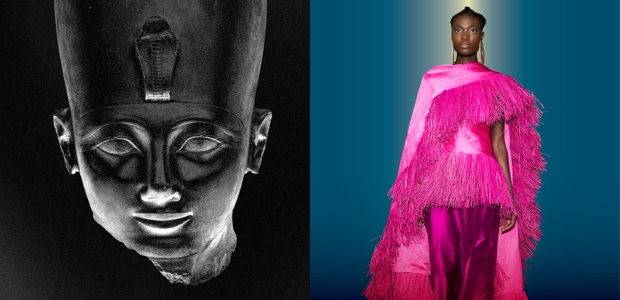Ivorian American designer, Loza Maléombho’s innovative collections are a fusion of cultural and sub-cultural references. Her design practice is an expression of her dual heritage and interest in artisanal traditions, female narratives and contemporary tailoring.
Here, Maléombho discusses her practice in more detail:
“My name is Loza Maléombho, I am a fashion designer of Ivorian descent, raised in the United States and based in the vibrant city of Abidjan, Côte d’Ivoire. I strive to not only showcase the beauty and richness of my African heritage, but also to reinterpret it in a modern context.
Designing and producing in Côte d’Ivoire, I aim to create a nurturing environment for the development and expansion of traditional craftsmanship. This decision is not only a reflection of my commitment to supporting local artisans, but also serves as a platform to showcase the unique talents and skills present within Côte d’Ivoire.”
“I endeavour to infuse my designs with the richness of African stories, motifs, textiles and craft techniques, thereby honouring the continent’s diverse cultural heritages. I always ponder over the question of how to contemporise traditional artifacts while preserving their intrinsic aesthetics and symbolism”.
“Luxury, in my view, resides within the realm of age-old crafts. Many of these practices, like dyeing, weaving and bronze work are passed down through generations, imbued with a wealth of techniques and specialised knowledge. It’s in this intergenerational transmission that we find the true essence of luxury. I interpret luxury not merely as opulence or extravagance, but rather as a fusion of ancient craftsmanship, contemporary design and cultural narratives.”
“I prioritise sustainability by integrating ethical production practices into my work, which includes sourcing materials locally and collaborating with artisans [such as shoemakers, dyers, weavers, and bronzers from the local community]. Every item is meticulously handmade and produced in small quantities to ensure quality and authenticity. Transparency is a key aspect of my approach, as I strive to minimise the environmental footprint of my designs, by making conscious choices throughout the production process.”
“Structured silhouettes and the use of fabrics such as burlap (jute), a coarse fabric traditionally used to package coffee beans, are signatures of my work. Notably, Côte d’Ivoire remains the number one producer of coffee beans, adding an additional layer of significance to the utilisation of burlap in my designs.”
“The Baoulé mask [a reference to my maternal lineage] also holds profound significance for me. It symbolises more than just a cultural artifact. By incorporating the Baoulé mask as a signature motif on buckles and fastenings and embellishments, I aim to honour my heritage, while also expressing unity in the harmonious coexistence of tradition and contemporary expression in my designs.”
“To create the fastenings, I collaborate with skilled bronze casters. Typically, these artisans come from families with a longstanding history in metalworking and possess extensive technical expertise. My decision reflects a commitment to both quality craftsmanship and innovative design solutions, as the scarcity of diverse and high-quality trimming resources locally has spurred me to explore creative alternatives – a trend that is gaining traction among designers seeking unique and sustainable options for their creations.”
“This collection holds profound personal significance for me, as it is the first collection I created after giving birth to my son in 2020. The arrival of my son not only brought immense joy, but also sparked a new consciousness in my life. This collection represents more than just a series of garments; it embodies a spiritual awakening and a journey of empowerment. The structured, powerful and graphic silhouettes featured in pieces like the Jao jacket, skirt and belt serve as visual representations of this new-found strength and resolve.”
“In construction, the jacket and skirt are made of natural jute fibres and the detachable part of the skirt fabric, from handwoven cotton, crafted by skilled artisans who typically work individually using intergenerational, traditional weaving techniques. The cloth undergoes dyeing using a tie-dye technique, tailored to my specifications.”
“Being profiled in Africa Fashion exhibition holds great significance for me, as it provides a platform to highlight the richness and diversity of African fashions and design. It validates my contributions to the industry and helps to amplify African voices in the global fashion discourse.”





